
Time to Ban Whales from Banderas Bay?
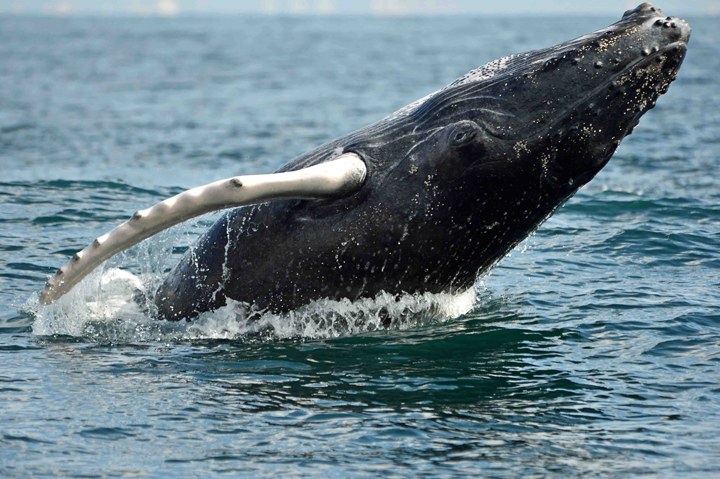
There we were, sailing downwind toward the finish line of Saturday’s Vallarta Cup race, trying to get the crew to keep paying attention to their jobs. It was hard enough as it was, because it was only blowing about seven knots, and we were doing about five knots, resulting in hardly any apparent wind at all. Being roasted by the tropical sun, the crew was getting disorientated.
A second later, WHOA! — a large whale about 100 feet away suddenly leapt about 100 feet out of the water. You should have heard the impact of his body as he landed!
As exciting as it was, everybody in the crew forgot their jobs, resulting in the chute collapsing, the main jibing, and three people spilling their drinks as they tumbled overboard.
We managed to restore order in about 20 seconds, but then the dang whale jumped out of the water again. And again. And again. Vessel discipline became so compromised it’s a wonder we crossed the finish line. Search as we may, we never did find any of the crew who went overboard. We blame it on the whale.
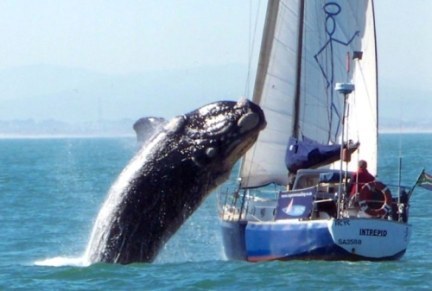
We suppose we can be thankful for something — the whale didn’t jump onto our boat. Not long ago Arjan Bok’s son was splashed by a whale who breached entirely too close to RotKat, his San Francisco-based Ligard 43 catamaran. There have been lots of close calls.
It would be one thing if whales abided by the rules of polite society, such as signaling when surfacing, not splashing others, and remediating their halitosis problem, but they just don’t seem to care. With our crew Rob and Tanya reporting that they’d seen at least 50 whales the day before, we believe a solution to the whale problem can’t wait. They must be banned. For safety. For more enjoyable yacht racing.
A-Cup Partnership Focused on Youth Sailing
Since 2008, a Bay Area nonprofit called SailSFBay has been quietly working to unite the Bay Area sailing community behind the goal of growing participation in sailing. During the group’s January 17 meeting, hosted in the Oracle Team USA compound at Pier 80, Tim Jeffrey of the America’s Cup Event Authority (ACEA) and John Craig from America’s Cup Race Management (ACRM) made a very exciting announcement: The ACEA will partner with SailSFBay for community outreach, especially events and programs that get more young sailors out on the water.
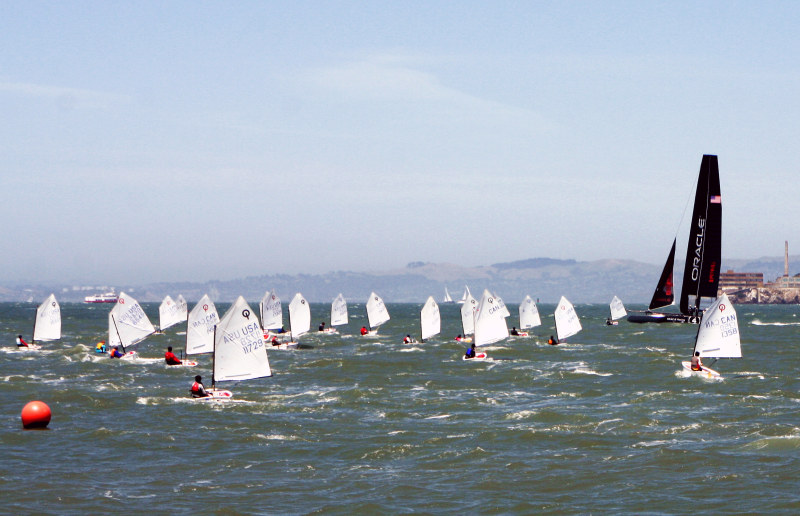
A variety of other sailing initiatives were discussed by industry leaders in attendance: Kame Richards detailed his efforts to work with the city of Alameda to create a dedicated community sailing center on their waterfront; Dave Santori of the Golden Gate YC spoke about the dramatic rise in high school sailing at their club and elsewhere in the Bay Area; and Cree Partridge of Berkeley Marine Center described the continued progress for the new SF2SF ’round-the-world race, slated to start in 2015.
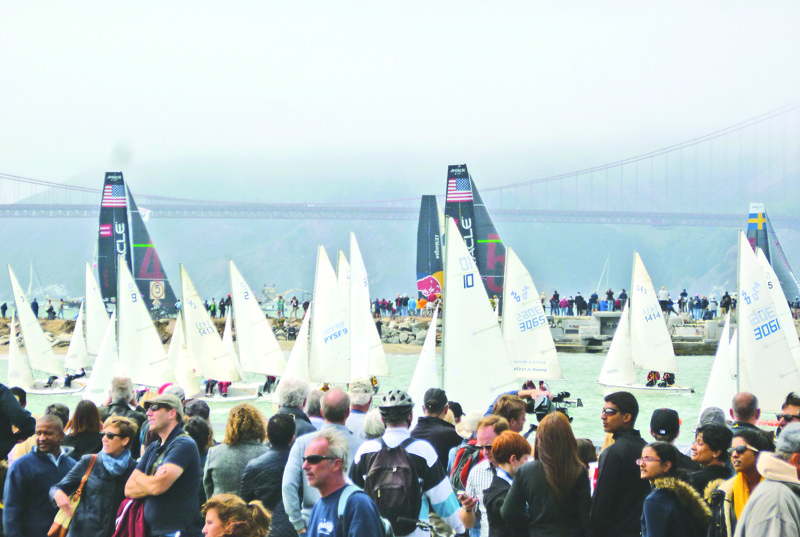
© Latitude 38 Media, LLC
Having the world’s most prestigious sailing event take place on San Francisco Bay this year creates a wonderful opportunity to increase participation at all levels of sailing. If you’d like to get involved in that effort, consider attending an upcoming SailSFBay.org meeting and/or joining the group.
Frank Savage at St. Francis YC
Good Tip For Mexico
Starting in mid-January, government officials in La Paz started knocking on boat hulls in one marina asking to see copies of Temporary Import Permits. TIPs were created about 20 years ago to provide a means for boat owners to leave Mexico without their boats. Prior to that, a boatowner technically couldn’t leave Mexico without also taking his/her boat out of the country. A TIP also allows boat owners — at least in theory — to bring replacements for broken gear into the country without having to pay duty. The original TIPs, such as the one Profligate has, were good for 20 years. Currently they are issued for 10 years.
One La Paz boatowner reported that a tax official came to his boat, took a photo of his boat’s registration number, checked it online, and found that it indeed had a valid TIP. So all was fine. It’s unclear if anyone has been ‘busted’ yet for not having a TIP. Technically a boat can be seized if she needs a TIP and doesn’t have one, but we think this is highly unlikely, as it would be a monumental public relations blunder on the part of a country that relies so heavily on tourism.
There are several complications to the issue. The first is that La Paz has a history of being more persnickity than other places about the interpretation of rules and laws. For instance, you never want to clear out of Mexico from La Paz because officials there require that you get, among other things, health clearances. At this point it’s unclear if only officials in La Paz are checking for TIPs, or if it’s being done countrywide.
A second complication is that TIPs aren’t available in all ports — even all ports of entry. You can’t get them from government offices in Cabo San Lucas, for instance, because they don’t have a Banjercito — a military bank — where you have to pay the fee.
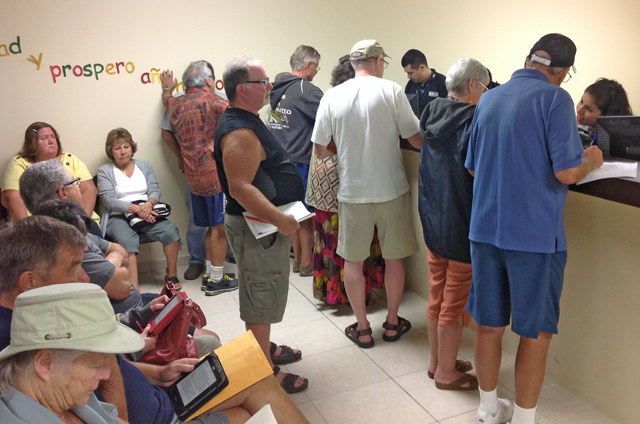
© Latitude 38 Media, LLC
A third complication is that it’s never been clear which boats need a TIP. For instance, do you need a TIP just to go to Ensenada? It’s always been our understanding that if you were just passing through Mexico, and weren’t going to leave Mexico without your boat, you didn’t need to get a TIP. It also been our understanding that ‘just passing through’ could mean the length of your personal tourist visa, which is normally 180 days. A potential problem is that some, if not most, marinas have been requiring a copy of a boat’s TIP before giving the owner a slip. In the case of boats arriving at Paradise Marina in Nuevo Vallarta without a TIP, Harbormaster Dick Markie sits the owner down and makes him/her get a TIP online right then and there. They cost about $50.
A fourth complication is that Mexico is trying to modernize it’s Immigration and Customs laws. There have been some major bumps along the road. So it’s unclear if this is a bump or policy.
How about a fifth complication? Mexico has a new President and a new political party — the PRI — that took over in early December. As such, officials at all levels have been replaced, in many cases with people who aren’t clear on the laws or at least how they had been previously enforced. So yes, there’s been massive confusion.
Fortunately, there’s an extremely simple solution to a very confusing problem — get a TIP. It’s easy to do online here, and in the big scheme of things, it’s not very expensive.

© Latitude 38 Media, LLC
As for Immigration, based on our visit to the spanking new Immigration Office at Nuevo Vallarta, located across the street from the Hard Rock Hotel and in the same building at the soon-to-be-opened Las Vegas Casino and the already opened ultra-modern hospital, it seems as if every Canadian and American was standing in line in order to upgrade their visas. We hope they are not in a hurry. We applied to renew our FM2 visa about November 15, and still haven’t got whatever they’re giving out now. There is confusion in Immigration, too.
Our advice is to go sailing, have a cerveza, and enjoy the sun — all the kinks will work themselves out in time.
